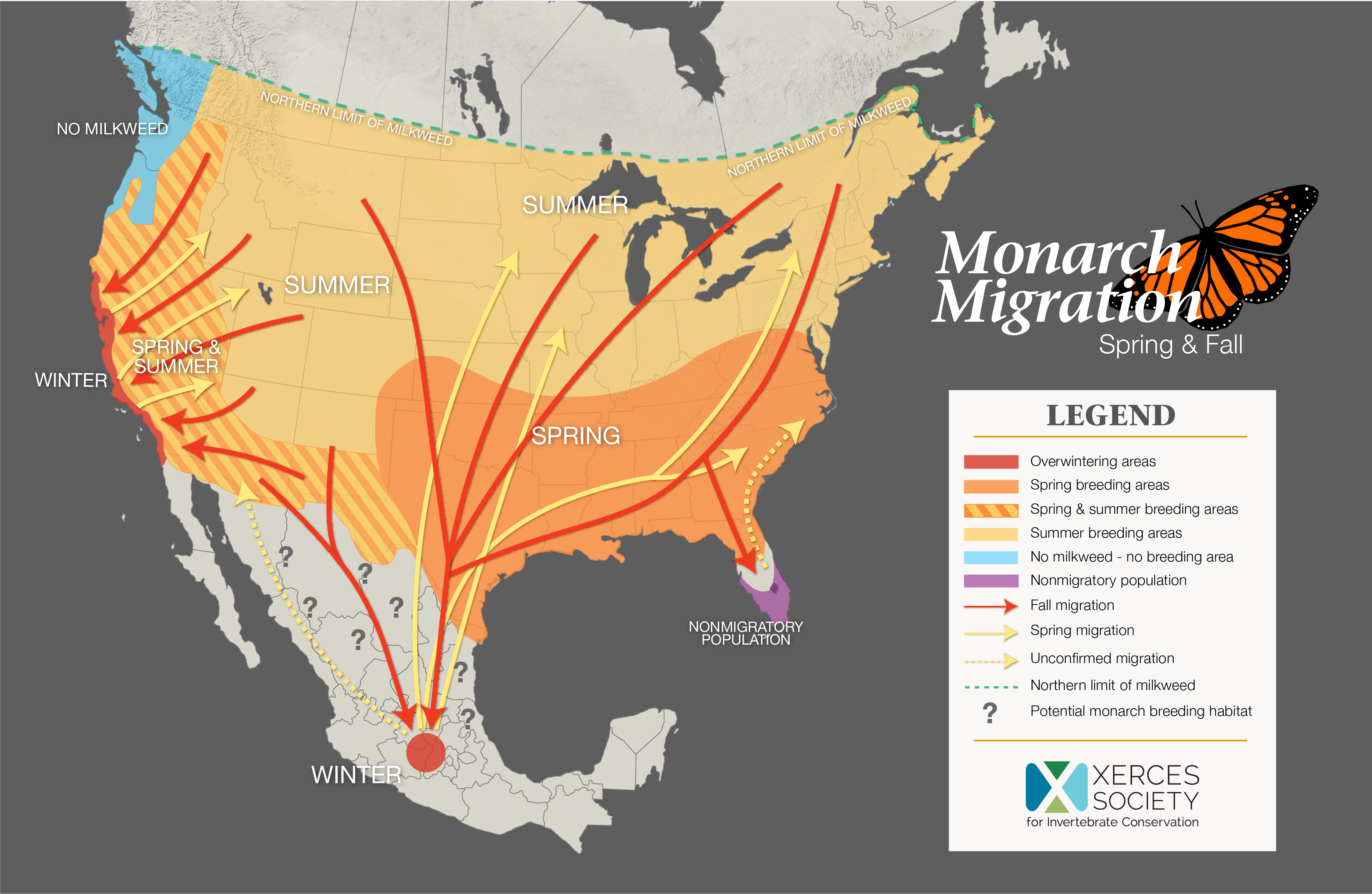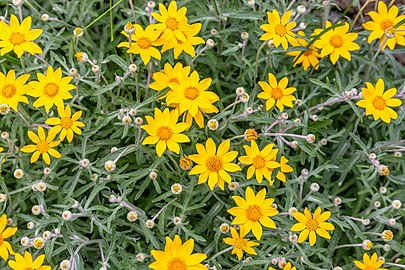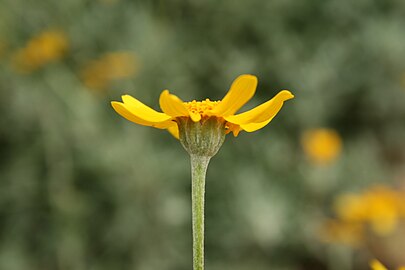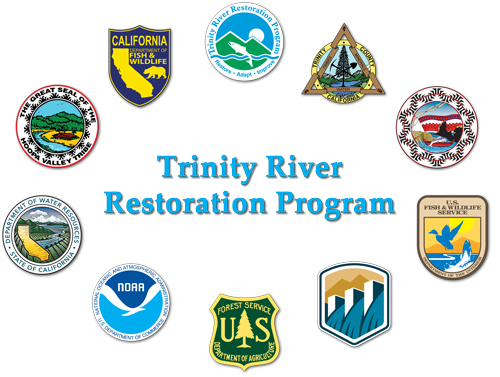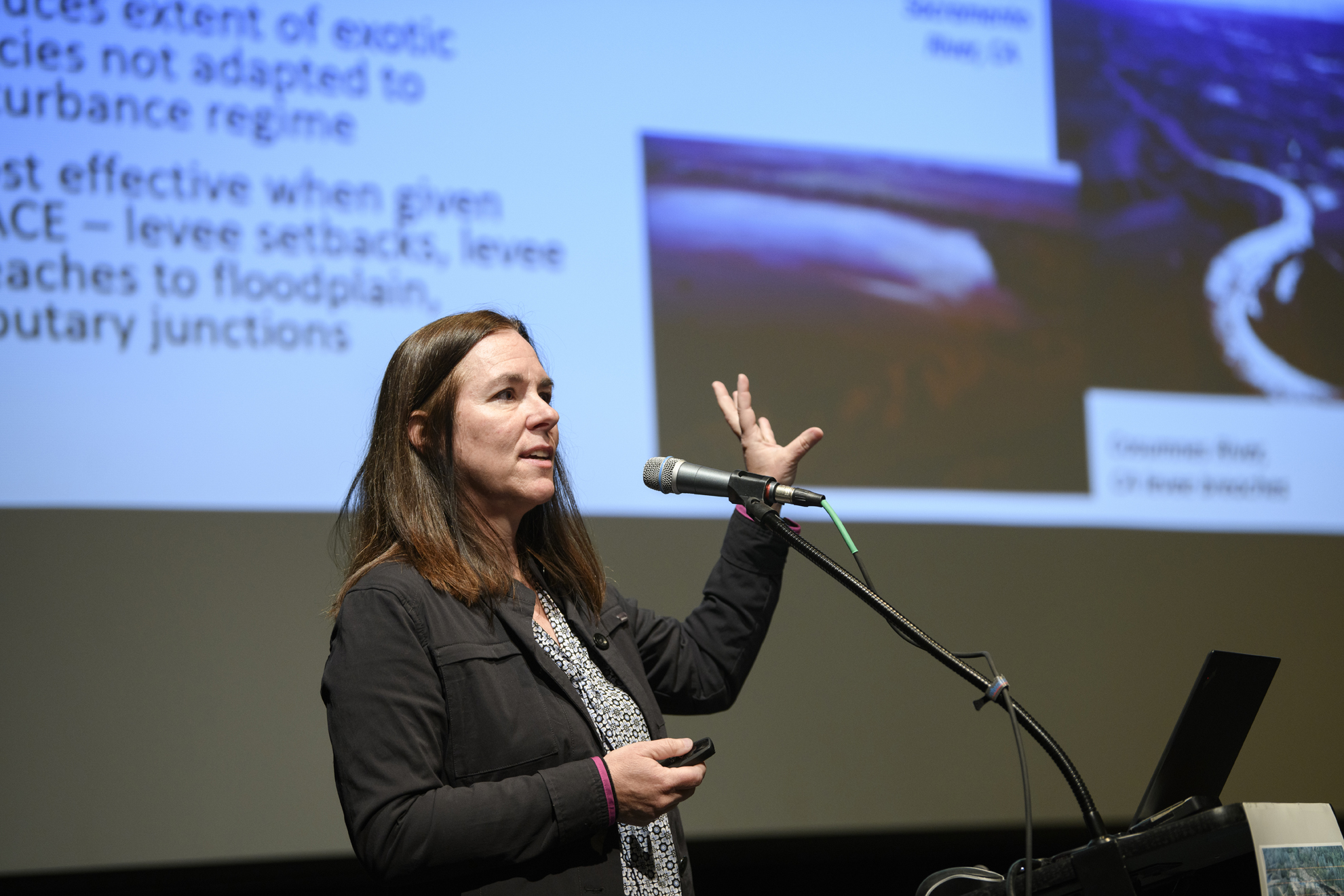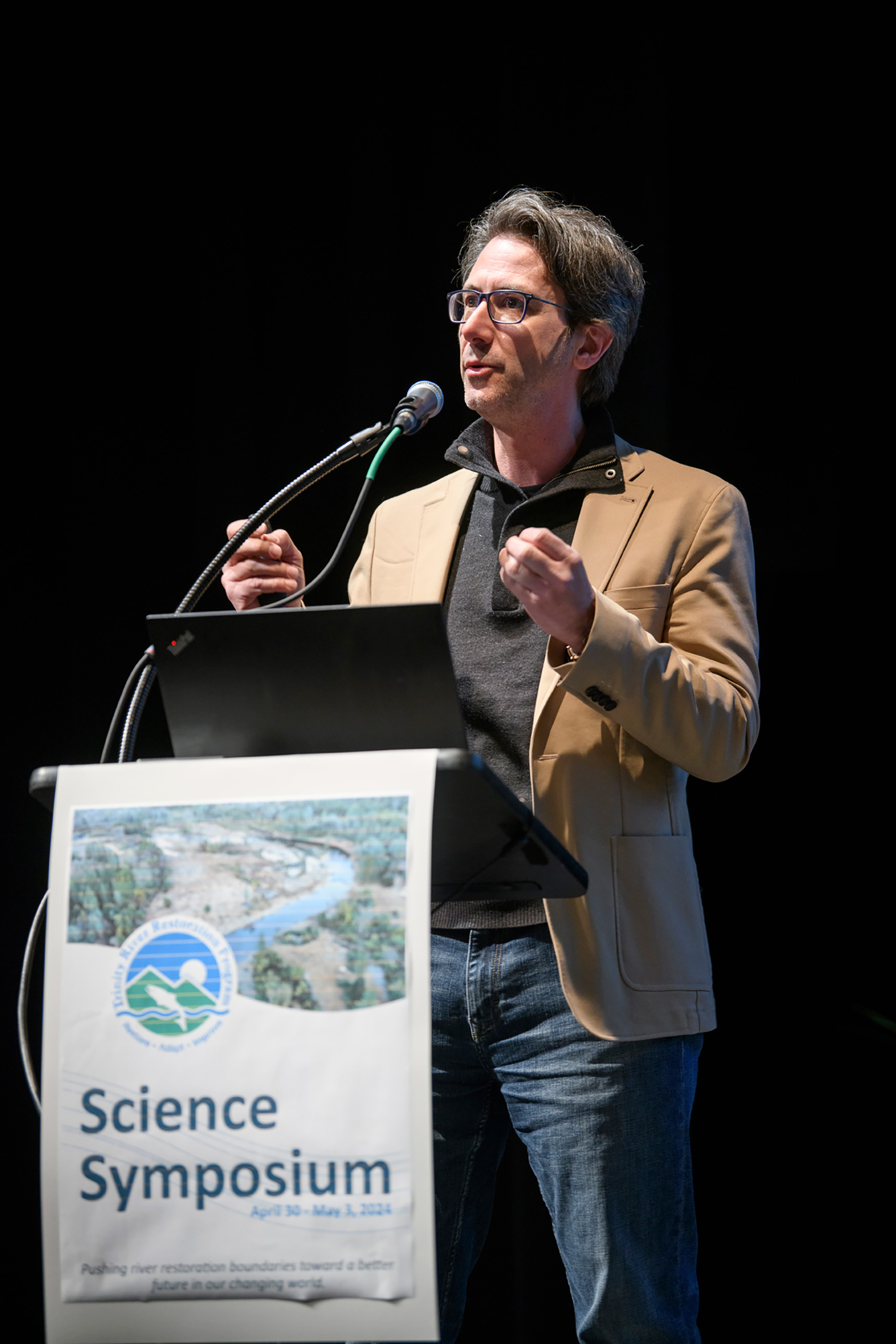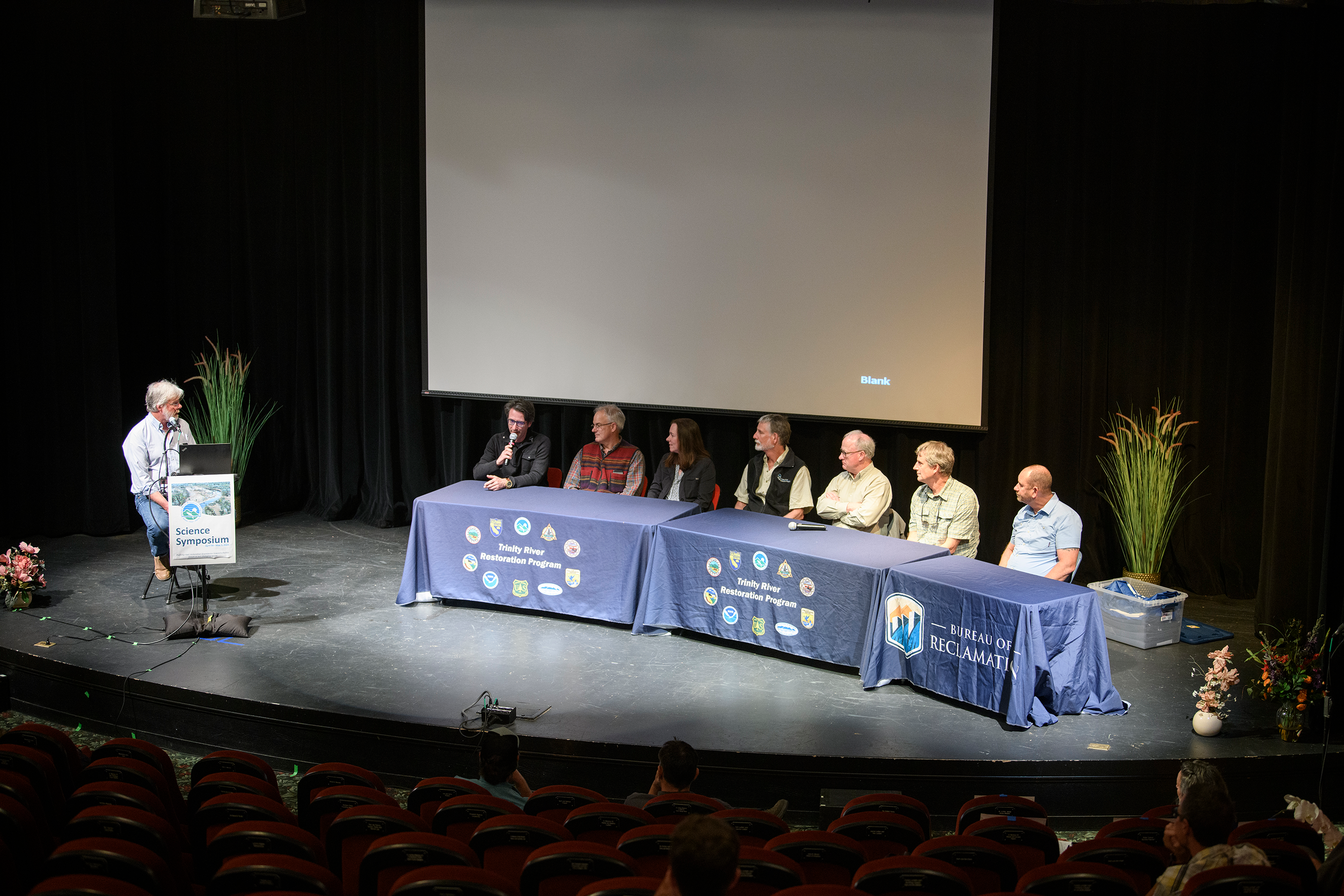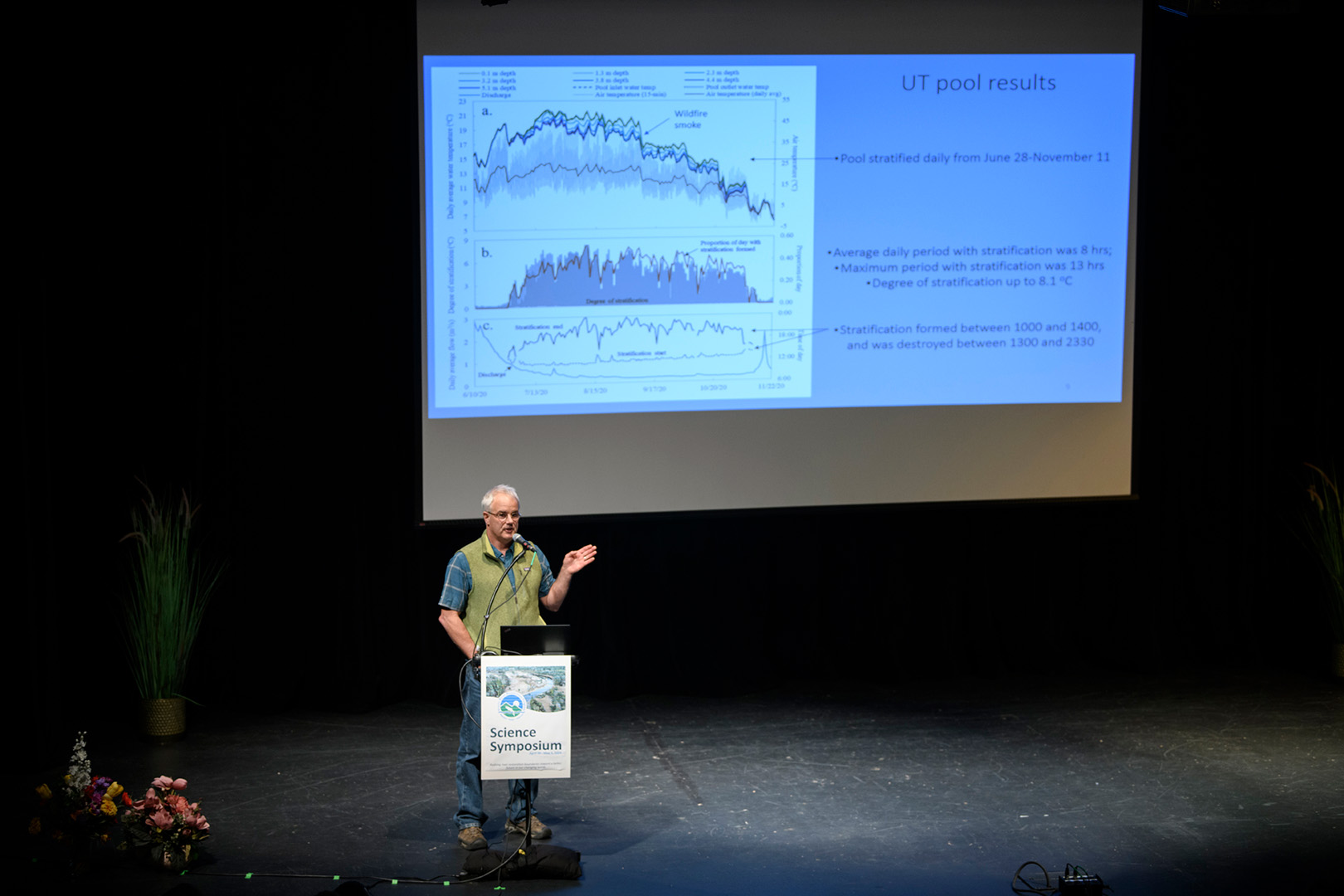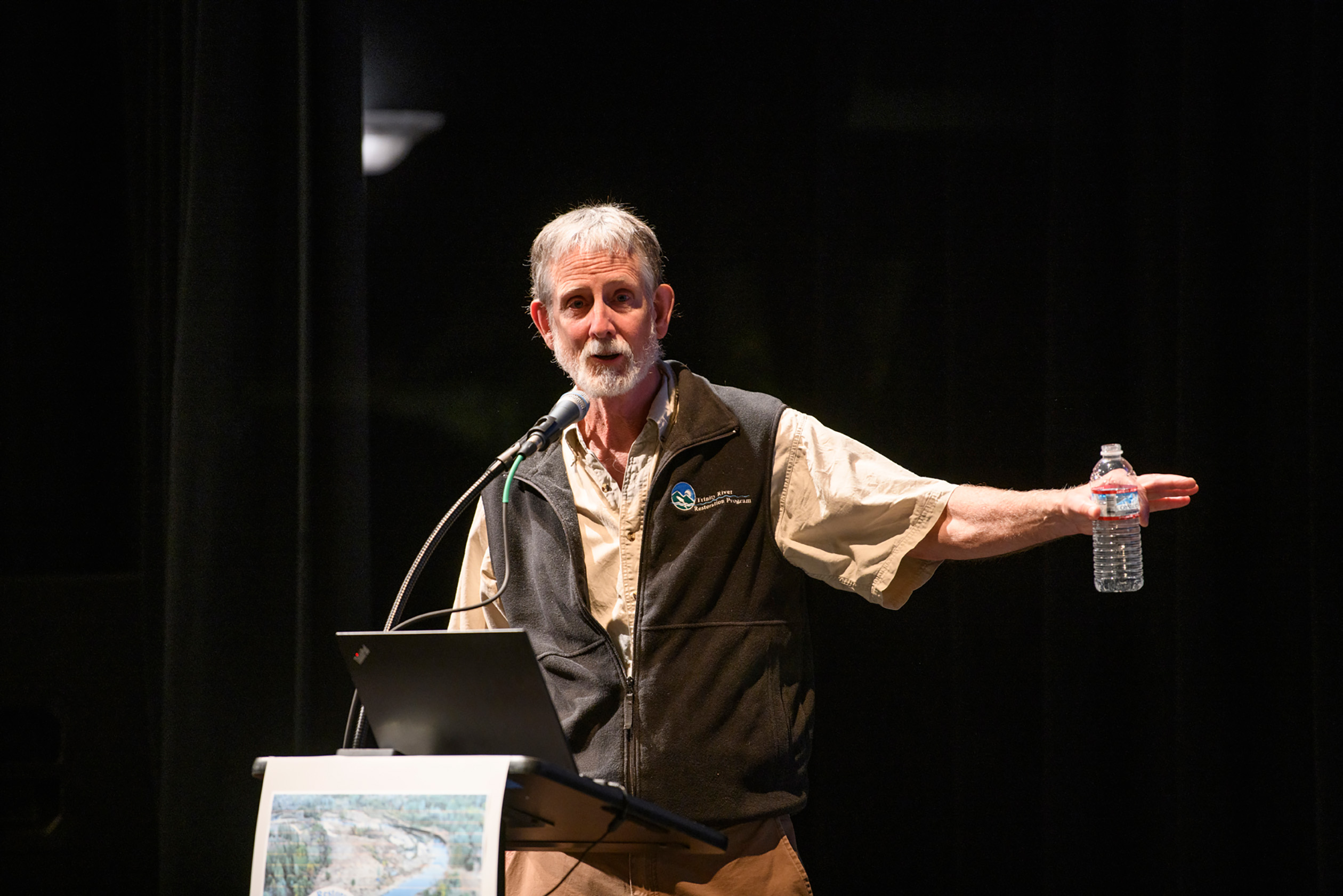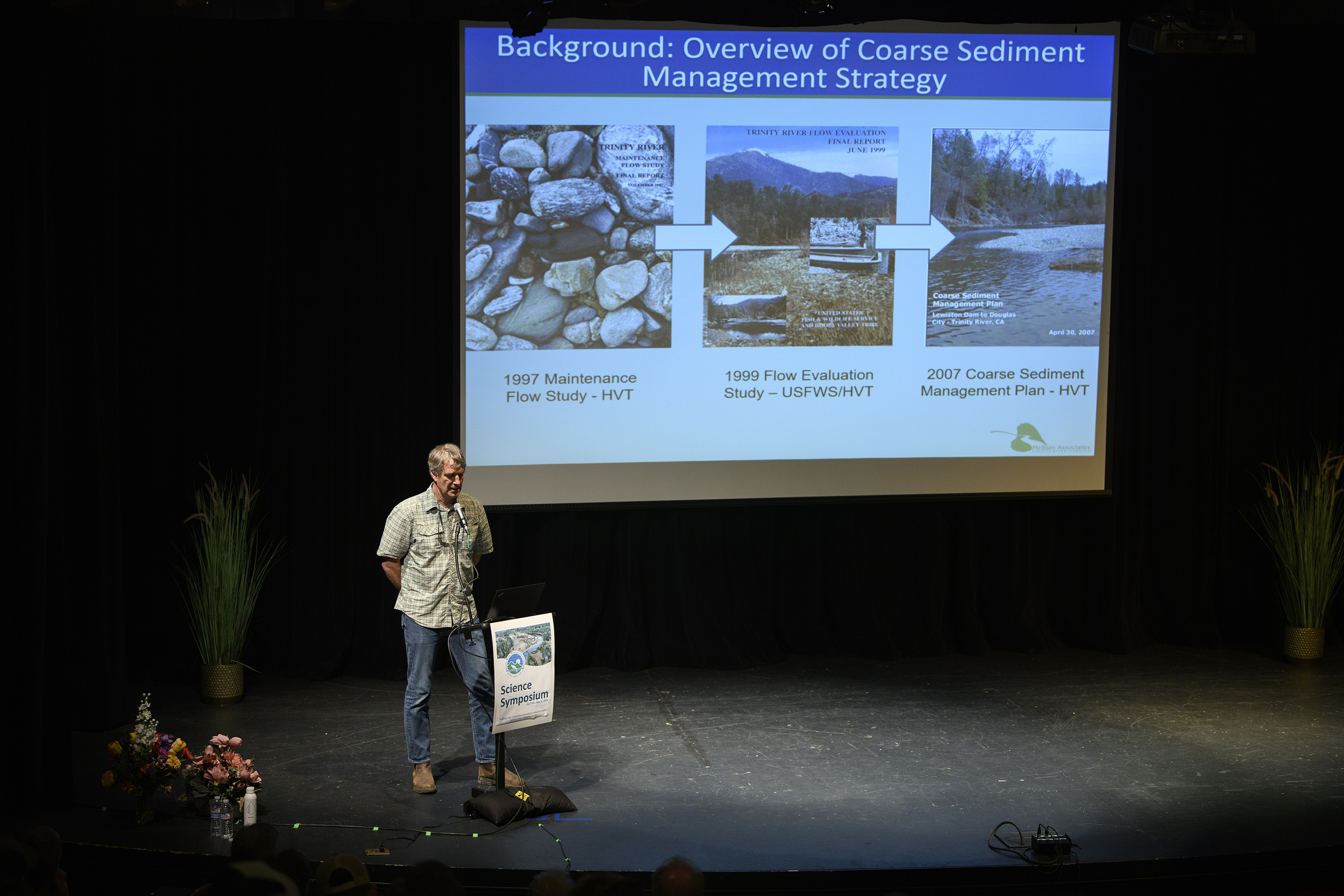The start of summer in Trinity County has been a hot one, with 100° plus degrees for 10 days straight in early July combined with another series of 100° degree days forecasted for the latter half of the month. As warm-bodied land dwellers, we cope with heat by seeking refuge: interior shelter, air conditioning, shade, and of course, water. Refreshing water comes in many forms – pools, sprinklers and creeks, lakes, and rivers – whatever is available to us! Cold-blooded salmon are not so different in this regard. Throughout their various life stages, they too seek water temperatures that provide opportunities for success.

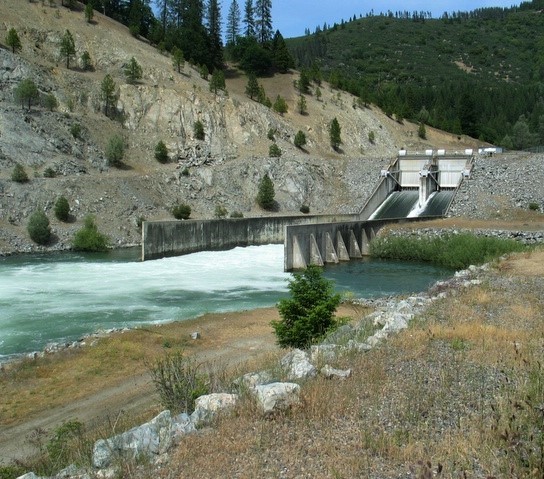
The construction and operation of Trinity and Lewiston dams have altered the Trinity River in many ways. Program scientists continue to learn about the complex ways dams affect water temperatures and fish within this altered system. For many years, “the colder the water the better” has been the dogma of salmonid management. While cold water can be beneficial, scientists have long known water that is too cold can also be detrimental. Like nearly all animals, salmonids grow and survive best within an optimal range of water temperatures, and temperatures above and below this range negatively affect them. Temperature variability is highly important because it allows fish to find temperatures that are optimal at different times of day for the various activities they undertake to grow and survive.
Last August, in the River Riffle newsletter we published “A Brief Introduction to Thermal Ecology of the Trinity River”. The article describes the thermal ecology of local rivers which experience cold, wet winters and hot, arid summers, characteristics of the Mediterranean climate of our region. Salmonids thrive where thermal diversity is available because they can maximize growth and survival by seeking optimal temperatures. For example, a juvenile salmonid’s job is to eat, grow and survive. At this stage, juveniles move from higher velocity areas where they feed in relatively cold water before residing in slower warmer areas of pools to rest and digest. The warm, slow water helps them relax and digest. Moving to take advantage of temperature differences allows them to efficiently digest their food to gain weight and grow larger. Eat, rest, digest, and repeat. The more that young fish can take advantage of these diverse temperature and flow conditions the better they can digest food into growth, which in turn improves their chance of survival in the ocean.
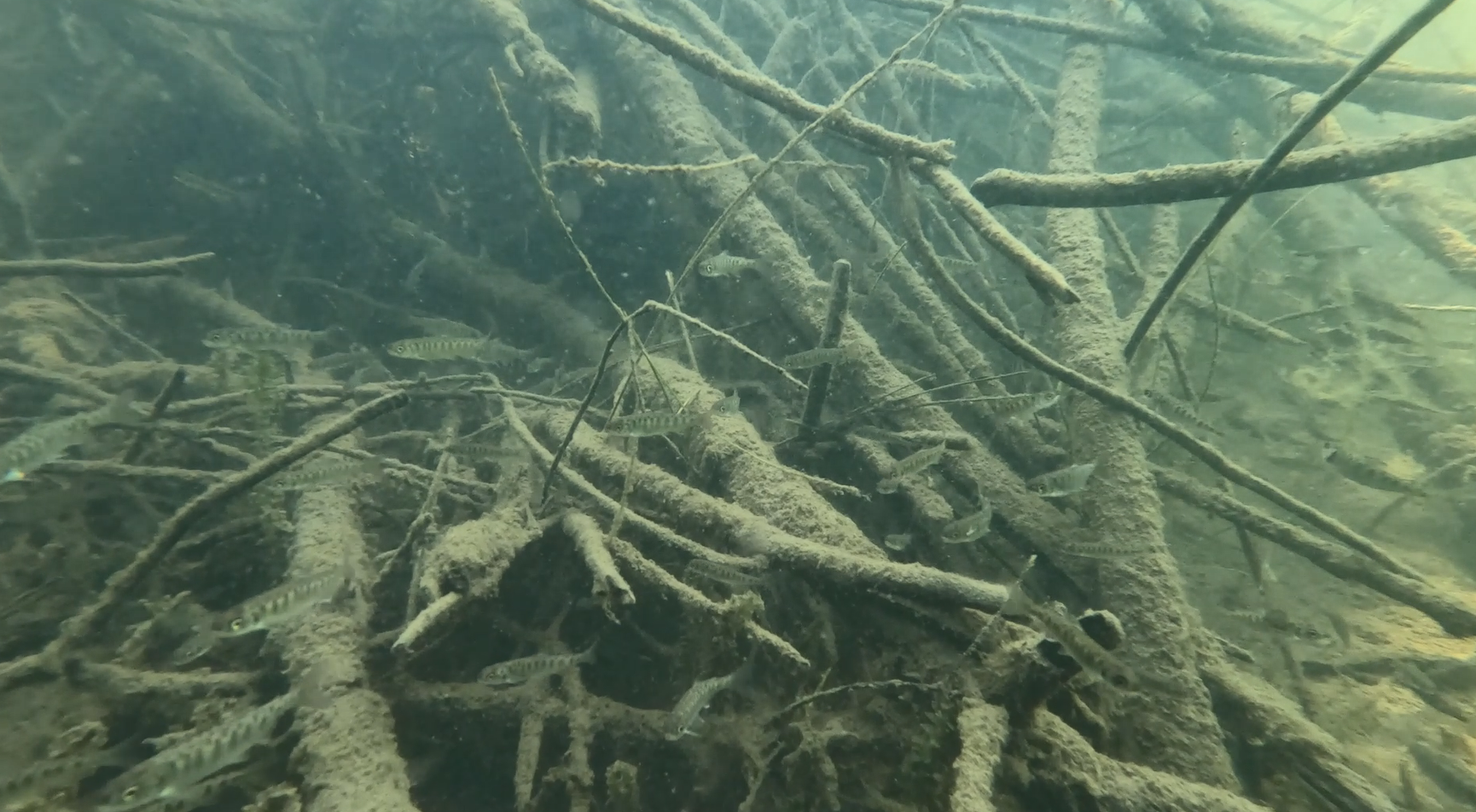
The seasonal, daily, and spatial temperature environment in the Trinity River before dams were constructed differed considerably from what we see today. Year to year variability was driven by winter precipitation and snow accumulation. As temperatures rose in the spring, snowmelt provided a regenerative increase in flow and expansion of habitat. On the journey from melting snow through creeks and tributaries to the mainstem river, water was warmed by the longer, warmer days, often reaching optimal temperatures for growth. As the snowmelt receded and the river returned to summer low flow, water temperatures in large, deep pools would stratify into different layers. In both these ways, temperature variability was provided to not only juvenile salmonids but also native frogs, turtles, and aquatic insects. The diversity of temperatures within nooks and crannies, combined with different depths and sheltered areas of the river formed a robust underwater nursery for the aquatic wildlife below. The timing and magnitude of these transitions and the variability of temperature depended on rain and snow patterns months before, yet the pattern was predictable. Fish and wildlife evolved over millennia to take advantage of this cycle.
The presence and operation of Trinity and Lewiston dams have dramatically altered the temperature regime in the Trinity River. As the spring and summer days heat up, Trinity Reservoir water stratifies to form a large pool of cold water below a depth of about 6 feet. Above this depth, water temperatures are warmed by the sun. Although infrastructure on some dams allow water to be drawn selectively from throughout the water column, Trinity Dam can only draw from its deep cold-water pool. Cold water that is released from Trinity Dam to Lewiston Reservoir warms as it flows towards Lewiston Dam, but releases to the river are still much colder throughout the summer than what the river experienced at Lewiston before the dams were in place. While the pre-dam river and other undammed local rivers warm in the spring to provide ideal temperatures for fish growth, the cold-water releases from Lewiston Dam keep the mainstem Trinity River so cold that growth of native salmonids, frogs, and turtles is stunted.
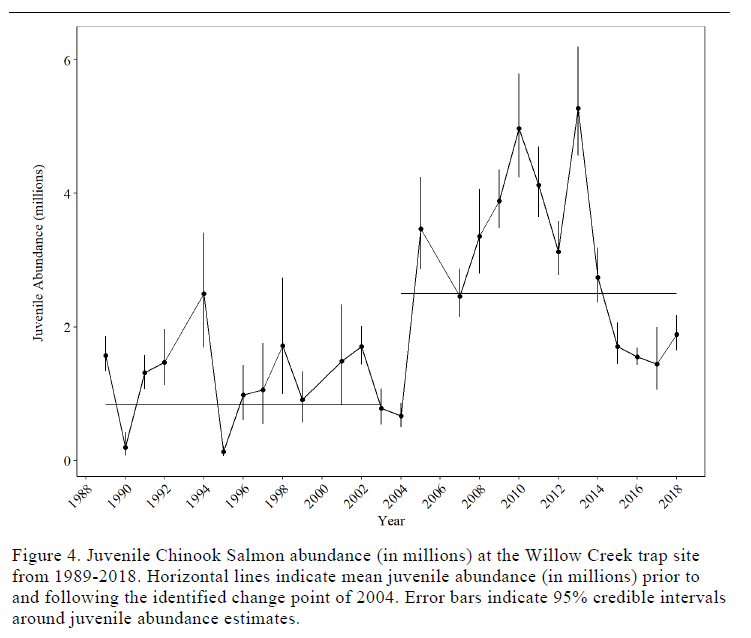
While juvenile fish population data collected by the Hoopa and Yurok Tribes and the U.S. Fish and Wildlife Service show that significantly more juvenile salmonids have been produced by the Trinity River since ROD releases began in the early 2000’s, these data also show that juvenile fish size has notably decreased (Pinnix etal 2022. Figure 4, Figure 12). Program scientists strongly suspect that large cold-water releases in spring are a significant contributing factor to this decrease in fish size, and smaller fish have a lower chance of surviving in the ocean. Despite increases in the number of juvenile salmonids leaving the Trinity River, adult returns have not increased, and in fact have declined since 2000.
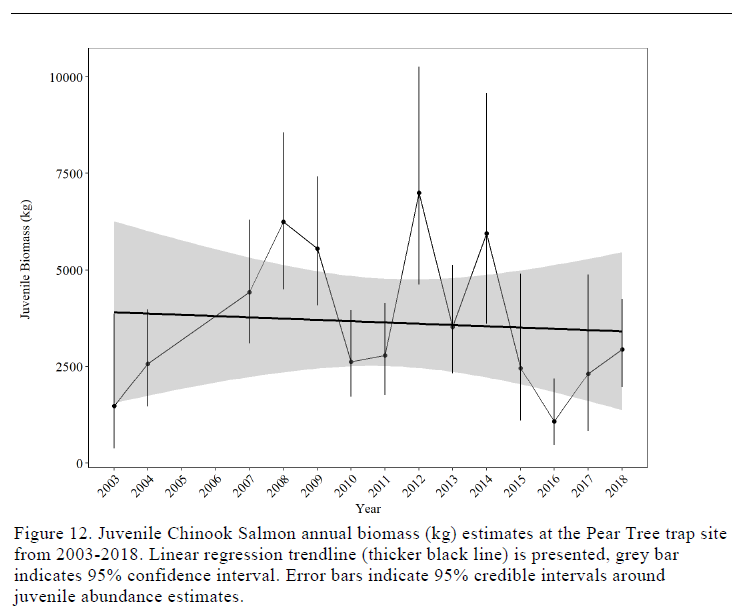
Scientists hypothesize that moving some of the Trinity River flow releases from springtime to the winter months would provide better growth conditions for juvenile salmonids by enabling summer flows to reach baseflow earlier in the year, allowing for the river to once again benefit the outmigrating fish (Asarian etal 2023, Abel etal 2021, Naman etal 2020). But what about the adult salmon. Would a warmer river harm them?
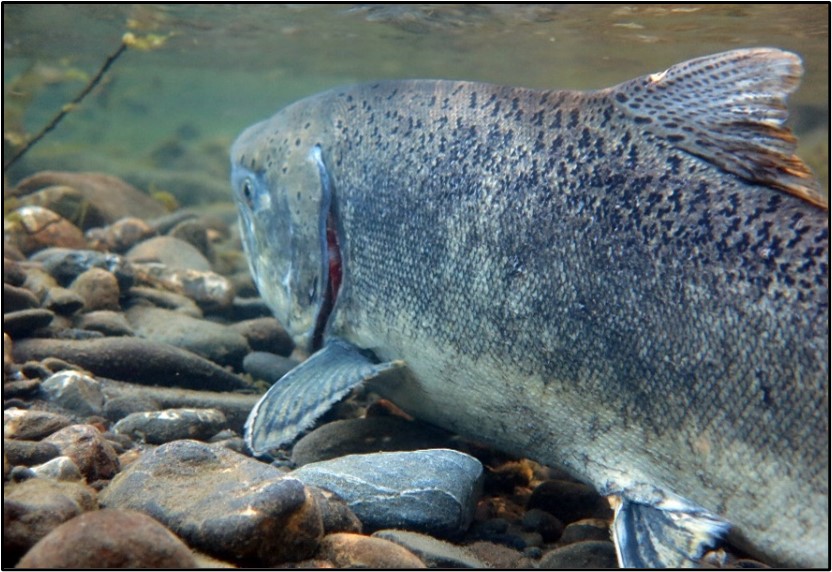
Adult salmon, like Chinook and coho, return to freshwater from the ocean with a different strategy than juveniles. Their focus is instead on the need to conserve energy for spring and summer migration in spring and spawning in fall. The prized spring-run Chinook take advantage of snow melt runoff in the spring to swim upriver. Along the way they commonly rest by day in slow water at the bottom of large, deep pools, behind fallen trees, under bedrock outcroppings, and downstream of large boulders. Water temperatures in the river increase as days get longer and hotter, while they can vary throughout the day as water cools at night and warms in daytime.
As spring progresses into summer, migration can become limited to cooler times of day, as the adults rest in the cold bottoms of thermally stratified pools by day and resume their upstream migration when the entire river has cooled at night. Finally, when adult spring-run Chinook reach their over-summer holding habitat, they can spend weeks to several months in deep pools with slow water to conserve energy for spawning in the fall.
There are many objectives of the regulated flow releases to the Trinity River from Lewiston Dam. Summer baseflow releases aim to provide favorable temperatures for migrating and holding spring Chinook who have lost access to habitat in the upper watershed above Trinity and Lewiston dams. This temperature mitigation is achieved by flow releases of 450 cubic feet per second from the end of the spring release until mid-October. A recent research paper published in the Hydrological Processes journal, The mechanics of diurnal thermal stratification in river pools: Implications for water management and species conservation (Buxton et al. 2022) explores the effects of summer flow management on the Trinity River. The research examines pre-dam flow records from 1911-1960 when summer flows averaged 177 cubic feet per second in the Trinity River in comparison to flows since 2000 that measure 2.5 times higher at 450 cfs. The increased flow and cold deep water drawn from Trinity Reservoir create summer temperatures that are around 18°F cooler (10°C) than pre-dam temperatures in summer at Lewiston. The post-dam Trinity River experiences more water and higher velocity, yet its habitat areas are remarkably smaller than the pre-dam environment which received less water and lower velocity.
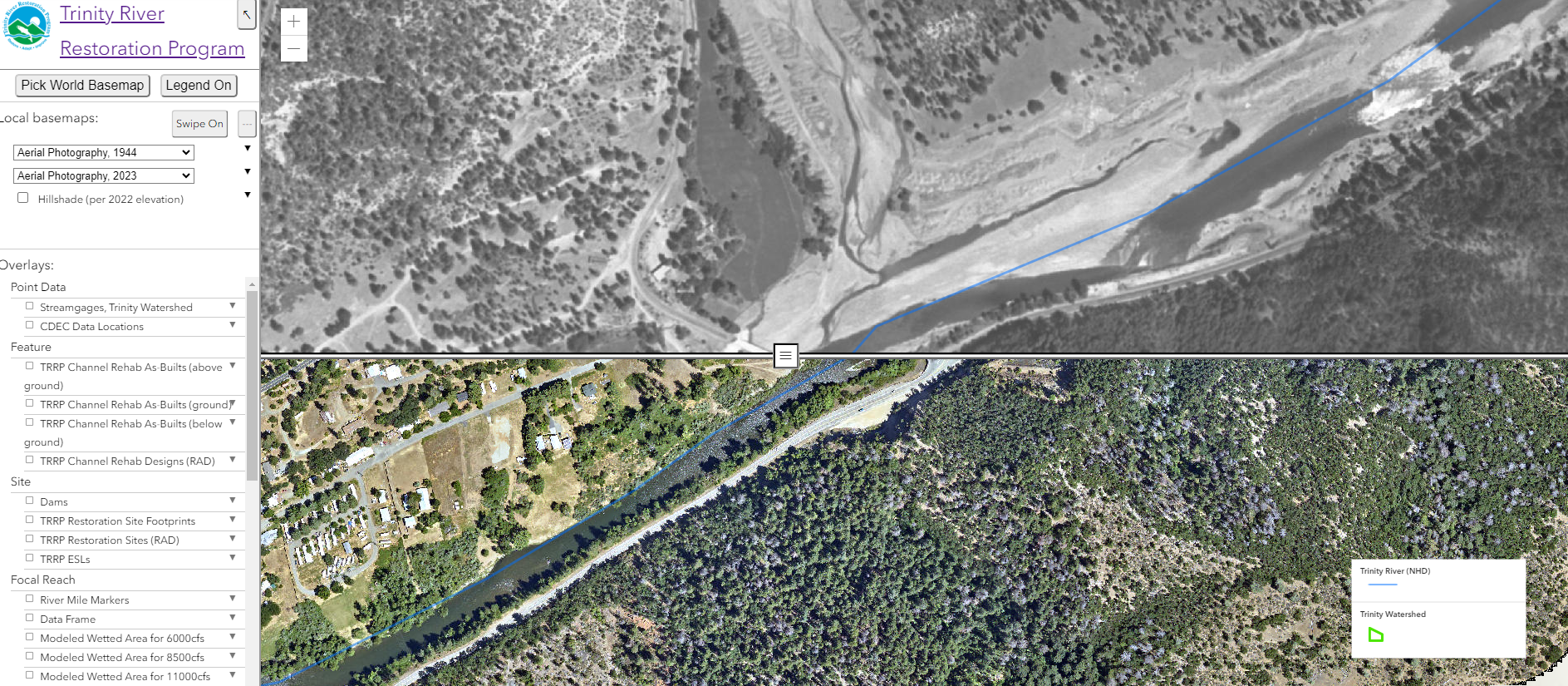
Above, we mentioned pool stratification in Trinity Reservoir. The stratification occurs because the slow-moving water warms and becomes less dense, which causes it to buoy toward the surface. This stratification of temperatures occurs in river pools that are large and deep enough (typically greater than 9 feet in depth). Size is important because when flow through the pool slows to a very low speed it prevents the warm top water from mixing with the cold bottom water and allows for stratification. This thermal layering in stratified pools is important for salmonids because it provides both adult and juveniles the opportunity to place themselves in the right temperature at the right time of day to best improve their survival and/or growth.
A key component of the pool stratification research was the measurement and modeling of temperatures as well as flow velocities in correctly sized pools for holding spring Chinook both below and above the dams. Data were collected and compared from a control pool in the Trinity River upstream of Trinity Reservoir as well as below Lewiston Dam (Pear Tree Pool). The findings showed that the pool above the dams exhibited stratification, providing the range of beneficial temperatures that follow the annual pattern of sun exposure and summer flows that naturally occur in our region.
In contrast, stratification did not occur in the pool below the dam at Pear Tree. Flows were too fast, mixing all water into one layer of uniform temperature. While temperatures in the Pear Tree pool were suitable for holding adult spring Chinook, the higher velocities increased their energy expenditure, likely taxing their energy supply needed for building and protecting redds and ultimately laying and fertilizing eggs. Unfortunately, the pool also lacked temperature diversity for juvenile salmon. Juveniles were presented with uniform temperatures and higher velocities, also taxing their energy supply needed for digesting their food to put on weight. Not to mention losing the benefits of temperature diversity discussed above.
Temperature diversity combined with variable water depths and velocities, refuge from predators, and plentiful food are important factors determining a young fish’s ability to grow and survive. While we often think “cold water is best,” perhaps a more accurate statement would be “diverse water temperatures are essential”! While that may seem obvious, a little clarification can improve our understanding of the needs of fish and how we may better serve them. Rivers in our region support a multitude of aquatic and land-based animals, insects, birds, and amphibians. Providing habitat diversity – including variable water temperatures – are paramount to meeting the needs of our wildlife community, and Program scientists continue to learn about the complex interactions between temperature and ecosystem health, hoping to better inform management on the Trinity River.
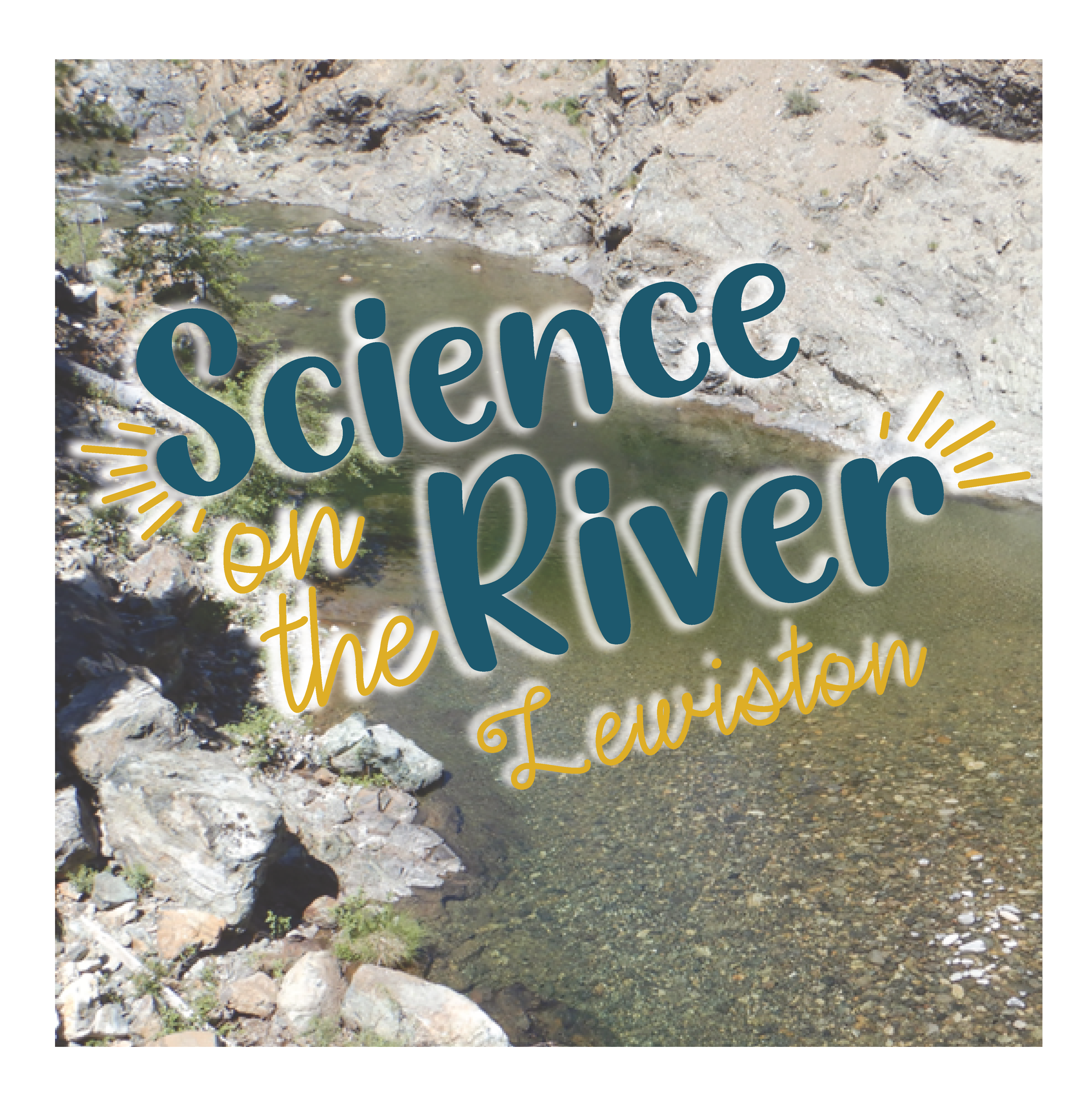
If you are interested in learning more about pool stratification on the Trinity River, join the lead author on this study, Dr. Todd Buxton, for Science on the River: Stratification of water temperatures in pools on the Trinity River at the Lewiston Hotel and Dance Hall on August 28, 2024 – 6pm. Todd is a Hydrologist and Fish Biologist with the Bureau of Reclamation – Trinity River Restoration Program who will lead us through the recent Trinity River study on thermal stratification in river pools. Pool stratification is an important ecological function of natural river systems and Todd’s findings show that pools in the Trinity River below Lewiston Dam are unable to stratify and provide critical habitat for juvenile and adult salmonids. Todd will discuss why the habitat is important for both life stages of salmon as well as other interesting findings from the study.
Citations
- Pinnix, W.D., S.P. Boyle, T. Wallin, T. Daley, and N.A. Som. 2022. Long-Term Analyses of Estimates of Abundance of Juvenile Chinook Salmon on The Trinity River, 1989-2018. U.S. Fish and Wildlife Service. Arcata Fish and Wildlife Office, Arcata Fisheries Technical Report Number TS 2022-40, Arcata, California. [link to download]
- Buxton, T. H., Y. G. Lai, N. A. Som, E. Peterson, and B. Abban. 2022. The mechanics of diurnal thermal stratification in river pools: Implications for water management and species conservation. Hydrological Processes 36(11):e14749. DOI: 10.1002/hyp.14749. [Link to Download]
References
Asarian, J. E., K. De Juilio, S. Naman, D. Gaeuman, and T. Buxton. 2023. Synthesizing 87 years of scientific inquiry into Trinity River water temperatures. Report for the Trinity River [Link to download].
Naman, S., K. De Juilio, and K. Osborne. 2020. Juvenile salmonid temperature target recommendations. Memorandum to Ken Lindke, Fish Work Group Coordinator. Trinity River Restoration Program, Weaverville, California. [Link to download].
Abel, C., K. de Juilio, K. Lindke, S. Naman, and J. Alvarez. 2021. Shifting a portion of Trinity River spring releases from Lewiston Dam to the winter period: a flow management action to benefit juvenile salmonid habitat availability, growth, and outmigrant timing. White-paper for the Trinity River Restoration Program (TRRP). TRRP, Weaverville, California. [Link to download].


